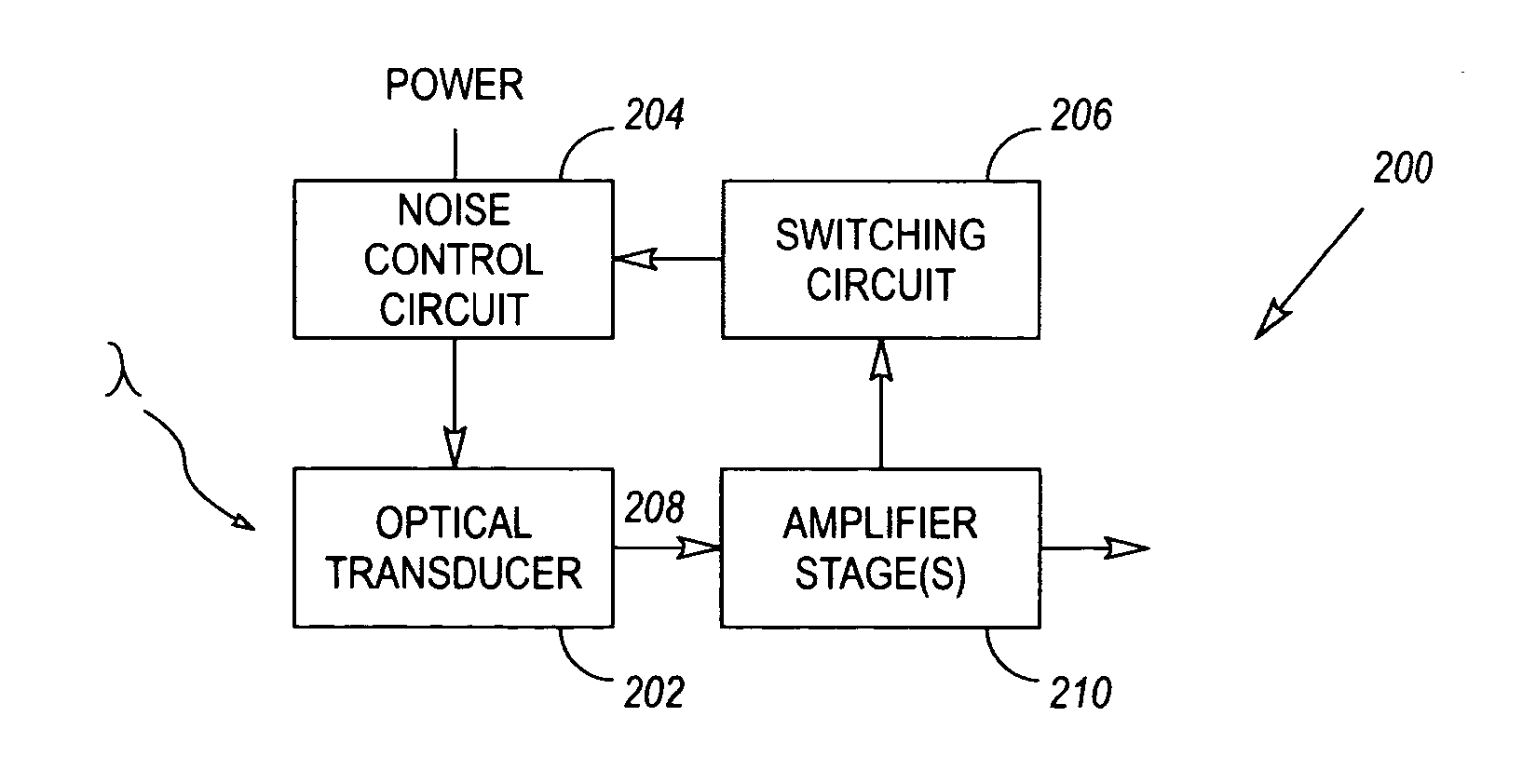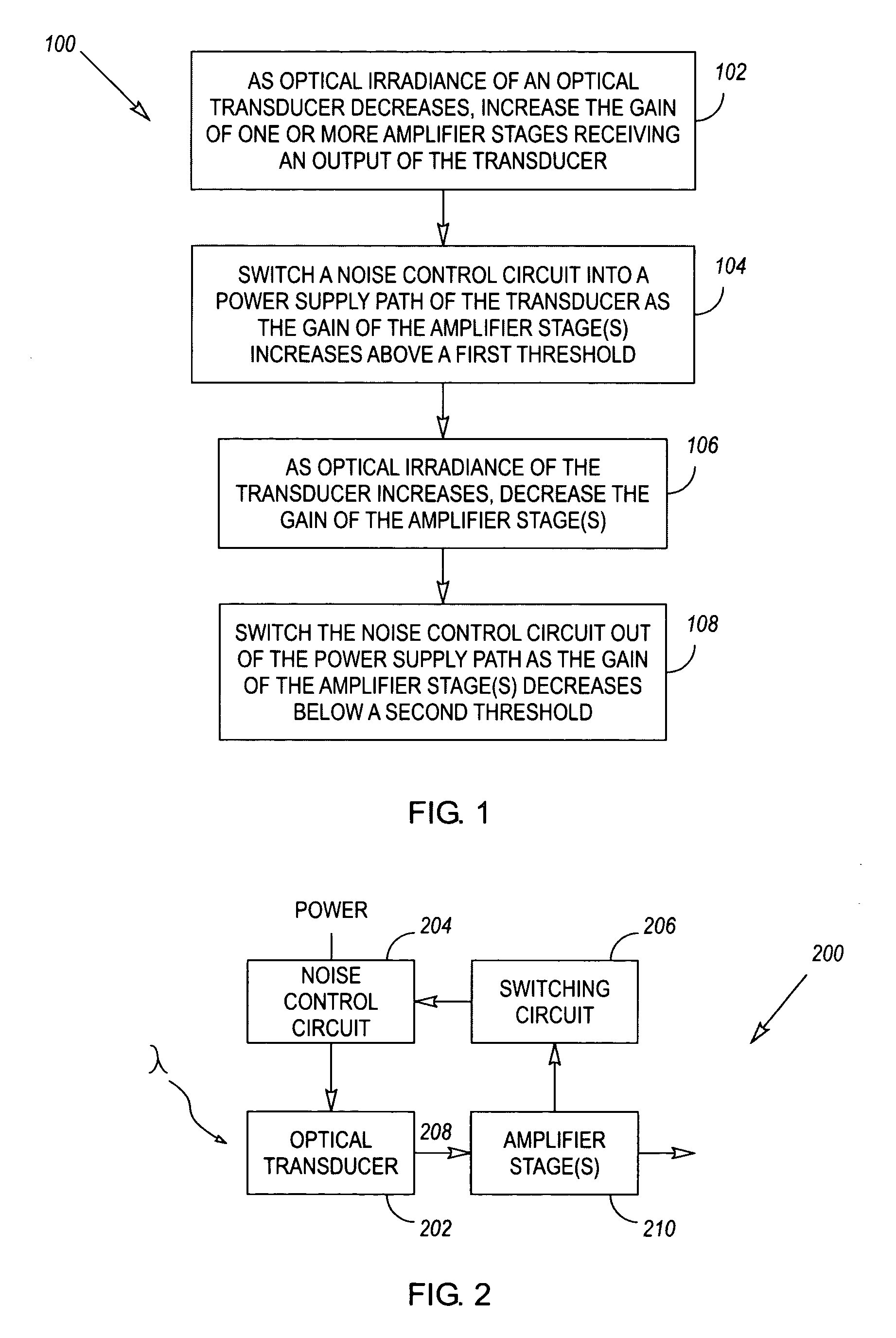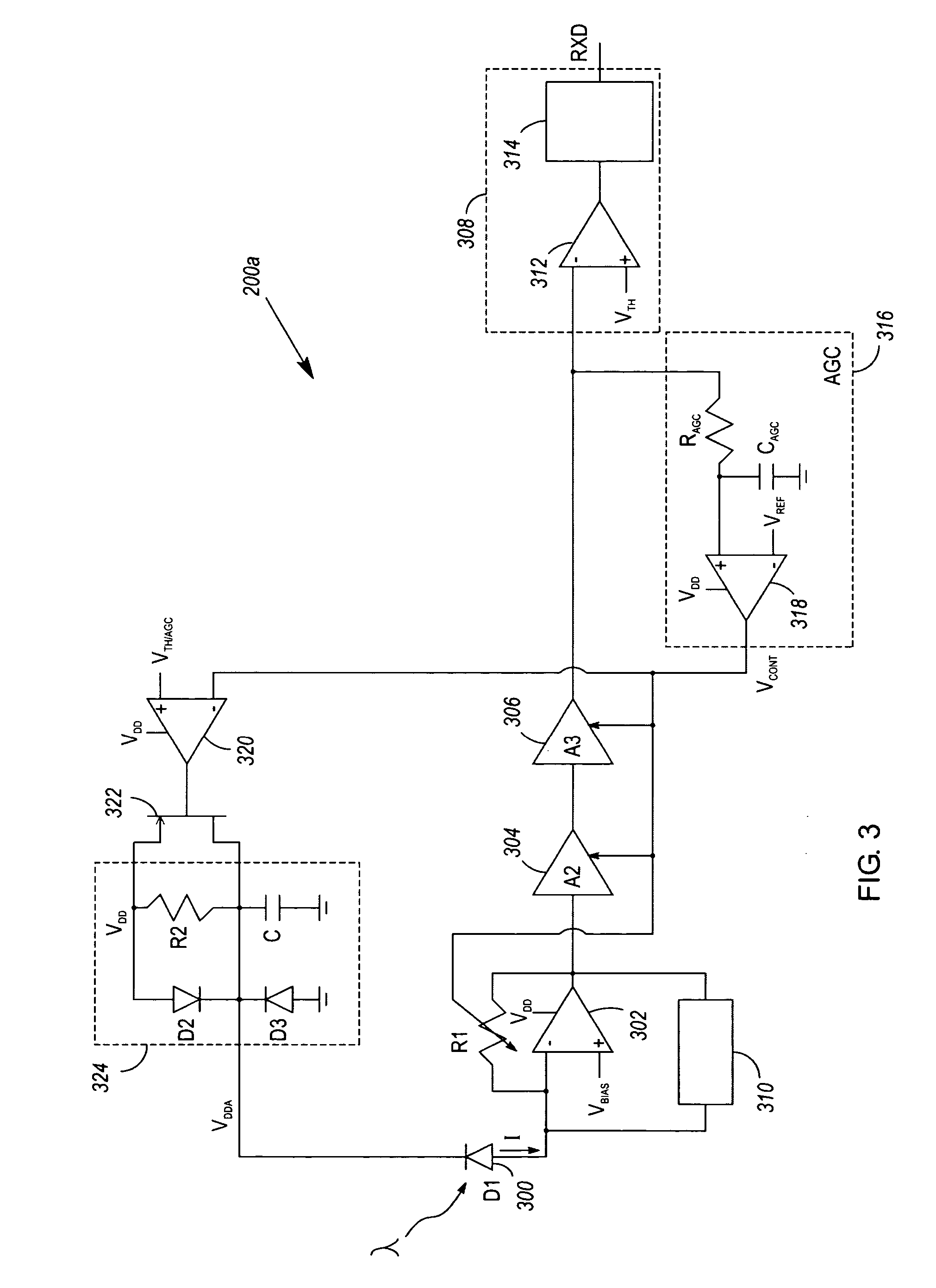Variable noise control for an optical transducer
a technology of optical transducers and variable noise, applied in the field of variable noise control of optical transducers, can solve the problems of increasing the risk of erroneous signal transitions in the ir receiver, increasing the risk of ir receivers, and increasing the number of optical transducers, so as to achieve noise control and reduce the irradiance of optical transducers
- Summary
- Abstract
- Description
- Claims
- Application Information
AI Technical Summary
Benefits of technology
Problems solved by technology
Method used
Image
Examples
Embodiment Construction
[0017]FIG. 1 illustrates a first exemplary method 100 for varying the noise control provided to an optical transducer. By way of example, the optical transducer may take the form of an infrared (IR) transducer that is designed to convert optical signals received from an IR transmitter into electrical signals.
[0018] In accordance with the method 100, as optical irradiance of the transducer decreases, the gain of one or more amplifier stages that receive an output of the transducer is increased 102. When the gain of the amplifier stage(s) increases above a first threshold, a noise control circuit is switched into 104 a power supply path of the transducer. As optical irradiance of the transducer increases, the gain of the one or more amplifier stages is decreased 106. When the gain of the amplifier stage(s) decreases below a second threshold, the noise control circuit is switched out 108 of the power supply path. The first and second thresholds may be the same or different.
[0019] Und...
PUM
 Login to View More
Login to View More Abstract
Description
Claims
Application Information
 Login to View More
Login to View More - R&D
- Intellectual Property
- Life Sciences
- Materials
- Tech Scout
- Unparalleled Data Quality
- Higher Quality Content
- 60% Fewer Hallucinations
Browse by: Latest US Patents, China's latest patents, Technical Efficacy Thesaurus, Application Domain, Technology Topic, Popular Technical Reports.
© 2025 PatSnap. All rights reserved.Legal|Privacy policy|Modern Slavery Act Transparency Statement|Sitemap|About US| Contact US: help@patsnap.com



